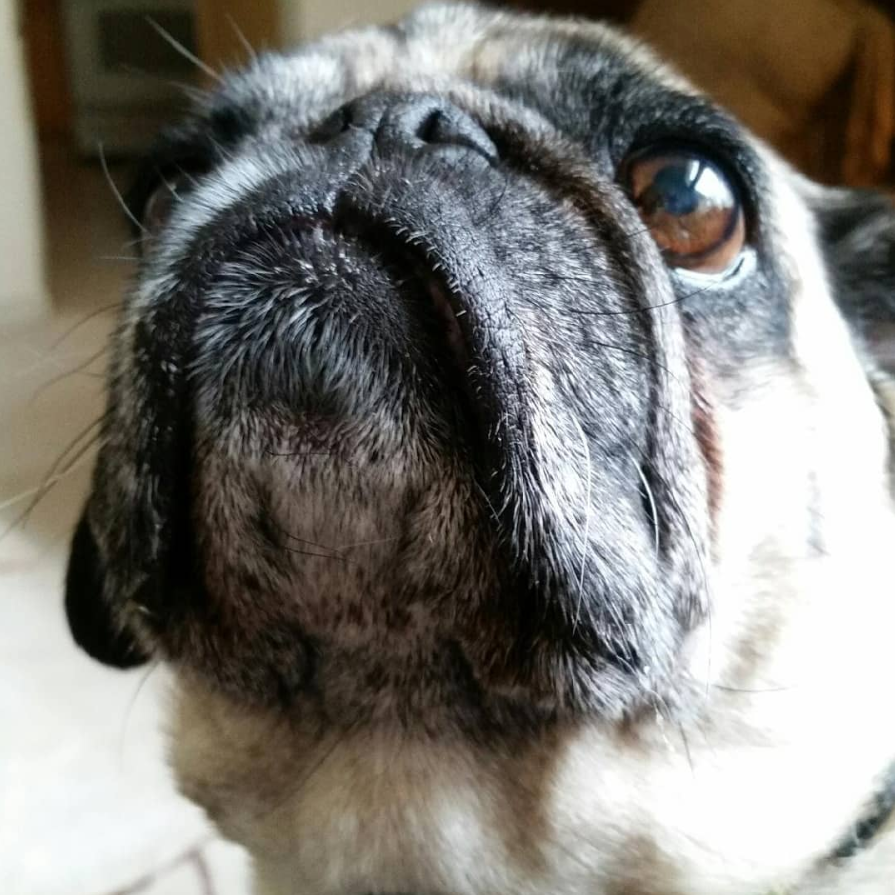Here are some tips for helping your pets get through this time without putting on a Quarantine 15 of their own:
Stick to Routines
I’m sure we don’t have to tell you – your pet knows when it’s time for supper! Avoid letting your more constant presence result in changes to usual meal times. Keep to your pre-pandemic feeding schedules. This will help your pets have more structure in their day, and more predictable potty times (and less cringey consistency in the aftermath 😉 ), too!
Junk Food Junkie
Stress causes us to eat differently. We turn to pizza, potato chips, and chocolate to satisfy our quarantine cravings. In times of stress our bodies naturally seek out sugars, fats, salts and carbs to be ready for fight-or-flight activity. These foods are also comforting and can calm us down.
It’s hard to resist those soulful eyes begging for pizza crusts or the insistent paw, patting you for the milk at the bottom of your cereal bowl. And no, cats can’t have a little salami. Not even as a treat! 🙂 It’s time to be strong! Between meal snacks can throw off potty schedules, leading to more frequent accidents. And gas? No one wants to shelter-in-place with Flatulent Fido or a Gassy Garfield. You can share healthy snacks like green beans in small amounts, and when in doubt, check with your veterinarian for suggestions!
Slow Down
If your pet eats too quickly, it can be dangerous to more than just their waistline. “Gulp & Go” pets experience statistically higher rates of bloat, gas, and regurgitation, and are at risk for issues like choking, gastric torsion or twisted stomach.
You minimize risks and help your pet maintain good gut health by getting them to slow down at mealtime. Slow feeders come in a variety of shapes, colors, and puzzle styles for both dogs and cats. Be sure to consider your pet’s size and snout type when selecting a feeder. Some can even be used for pets who gulp water! Here are a few of our favorite slow-feeders:
Teach Some New Tricks
If you’re running out of shows to binge watch, consider training activities. Treats have calories too, but reward-based training methods don’t have to add to weight gain. When training, measure out rewards, reduce meal portions, or consider using the dinner kibble itself as the training reward. Who says dinner needs to happen all at once and in the bowl? Using training and puzzles to feed and train will help your pet use their mind, slow them down, and strengthen their relationship with you while boosting puzzle-solving independence and confidence.
Exercise and Get Plenty of Rest
As always, exercise if important for your pet! A brisk walk daily may be fine for a pug, but an active retriever may need an hour at the park with a tennis ball to stay fit. Switch things up so you and your pet don’t get bored, and tailor exercise to your pet. You can exercise your feline friend with feather sticks, wind-up mice, or laser pointers. Some kitties even enjoy leash training and running on jumbo cat wheels!
Your pet might have been thrilled when you first started sheltering in place. Now, however, your dog might be exhausted from his fourth walk of the day. Pets need quite a lot of naps and rest time, and a lack of sleep can throw off metabolism. Play and exercise as a fun bonding experience, but try not to totally wear out your companion.
A Final Thought…
Many say that a “tired dog is a good dog,” we at HSBV like to say a “happy pet is a good pet.” Enriching your pet’s life with healthy treats, stimulating training, fun exercise, and reinforcement of their good choices positively will increase their happiness, which will make them much more eager to learn, listen, and love you! We know the relationship you share with your pet is special, unique, and life-changing. In large part, thanks to our pets, our time at home during a difficult time has been enriched with silly antics, belly laughs, comforting snuggles, and a breath of fresh air and soaking in sunshine (and even some snow day romps!). Make sure to give your pet an extra belly rub, chin scritch, or maybe a kissy boop to thank them for all the brightness they’ve added to your life!
Here’s to a healthy future for us all!

